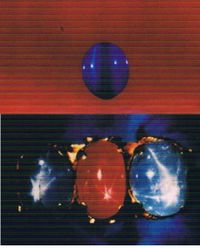Vaidurya: Difference between revisions
mNo edit summary |
No edit summary |
||
| Line 7: | Line 7: | ||
==Further Reading== | ==Further Reading== | ||
*[[Mirror of Stainless Crystal]], pg 27-19. | *[[Mirror of Stainless Crystal]], pg 27-19. | ||
[https://www.repository.cam.ac.uk/bitstream/id/636759/bot/;jsessionid=C50099F7934FDEBA3FEF1856C88C3C6C Marianne Winder, Vaidurya] | *[https://www.repository.cam.ac.uk/bitstream/id/636759/bot/;jsessionid=C50099F7934FDEBA3FEF1856C88C3C6C Marianne Winder, Vaidurya] | ||
[[Category: | [[Category: Tibetan Medicine]] | ||
Latest revision as of 11:02, 19 August 2017

Vaidurya (Skt. vaiḍūrya; Tib. བཻ་ཌཱུ་རྱ་, Wyl. baiD'ur+ya or bai DU r+ya) — a substance which can ordinarily be identified with beryl, cat's eye, lapis lazuli, chrysoberyl and aquamarine, yet it also refers to something very special. For example, in the White Lotus Sutra it is said that vaidurya is one of the relics of the buddhas. In most cases though, it is probably best identified with beryl. It can have several colours, but when it refers to the Buddha of Medicine, as in the Buddha of Medicine dharani, it is definitively blue or aquamarine.
The terms beryl and vaidurya are also likely to be linguistically connected, through Greek and Prakrit. In contemporary Indian usage, it refers mainly to cat's eye aka chrysoberyl, and in ayurveda it can also be synonymous with blue sapphire. Sometimes it is also thought to be lapis lazuli, yet since that stone is opaque and vaidurya is often said to be sparkling or to have a radiant quality, as in the case of vaidurya prabha, that is not often the case. But in Tibetan and Chinese context, the interpretation of being lapis lazuli might hold up since in those cultures lapis lazuli was held in high esteem.